When I consider your heavens, the work of your fingers, the moon and the stars, which you have set in place... Psalm 8:3
Living above the 47th parallel, daylight is now stretching into the late hours, with the sun not even beginning to set until after 9:00 pm. Laying outside on clear summer nights and looking up at the stars is a favorite summer activity, especially stunning when beyond the reach of urban lights.
That same night sky has guided humans and animals in their travels, created healthy rhythms of rest and work, and has invited humans to reflect on their place in a vast universe.
In honor of these same dark skies, I invite readers to reflect on these starry night paintings, which, though they all are interacting with the same night sky, see that sky from different perspectives and with different creative approaches.
As you look at the paintings, try to remember the last time you lay under the night stars. In conjunction to that question, consider whether there are things you can do to help maintain the darkness that is so important both to humans and to other creatures who also depend upon it.
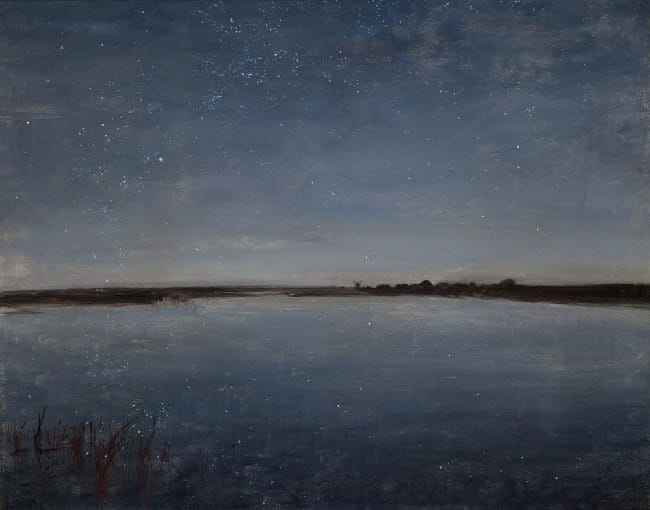
As I look at the painting, Starry Night, by Józef Chełmoński, the largeness of the sky and the water reflected back draw the viewer into a dark, peaceful, star-filled place. With the water reflecting the sky and stars, it immerses the viewer within the stars and the night sky.
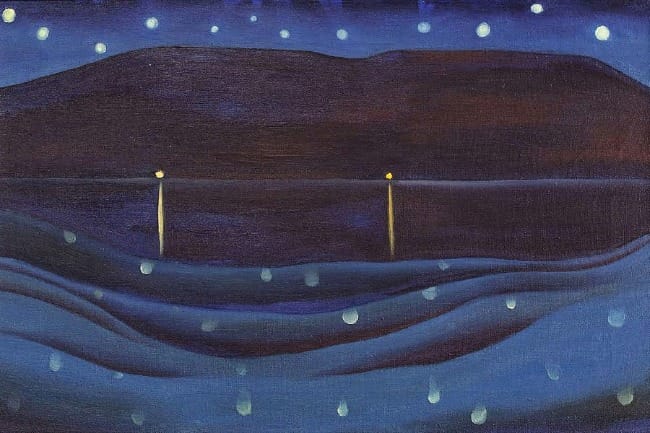
Water and the sky are the central images, also, in Georgia O'Keeffe's painting, Starlight Night, Lake George. Consider these questions: What catches your attention in this painting? The pattern of dots? The two yellow lights? The relationship between the thing and its reflection?
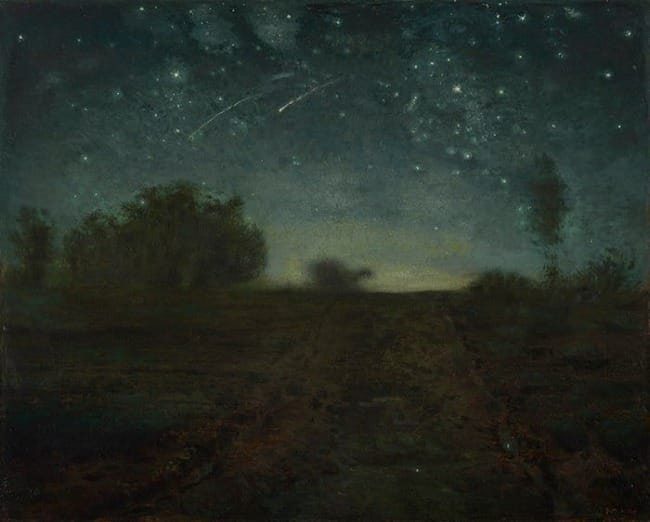
In a letter to his brother, Jean-Francois Millet wrote, "If only you knew how beautiful the night is ... the calm and grandeur of it are so awesome that I find that I actually feel overwhelmed."
In Millet's painting, the colors melding together create a dusky mystery where shapes can be recognized, but not in detail. As everything else grows dimmer, the stars grow brighter, with shooting stars becoming visible as they streak across the sky of the painting.
Do you allow yourself to feel overwhelmed by the beauty of nighttime?
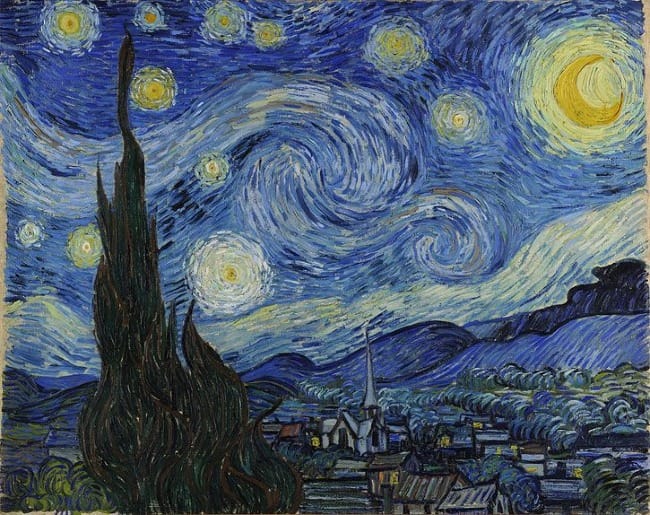
Vincent Van Gogh greatly admired Millet and it is likely that Millet's painting influenced Van Gogh's more popular painting, Starry Night. Although the paintings are very different, they both capture a sky of movement and light, which Van Gogh does with his short and swirling brush strokes. Beneath this lively sky filled with wonders, a city sleeps, unaware, it seems, of what is transpiring just above its roofline.
Do you look up when you walk outside at night?
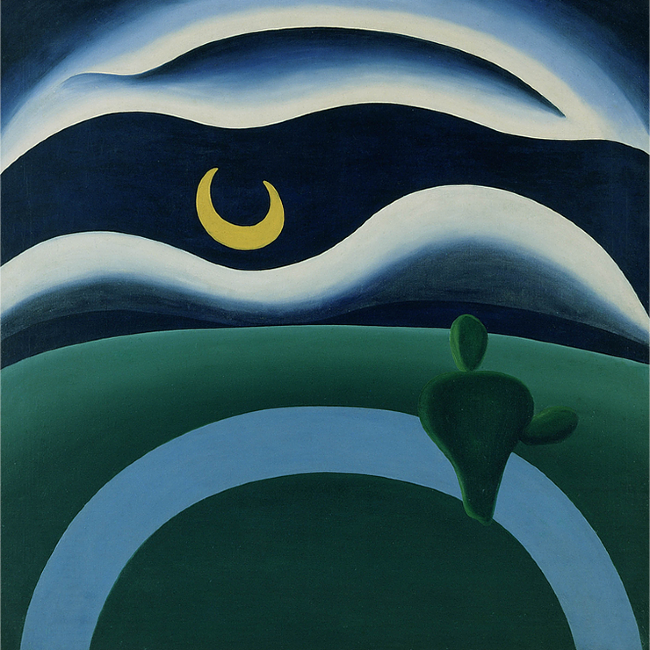
The Moon, by Tarsila do Amaral, gives us an entirely different perspective, with its more stylized lines and shapes. What can be seen as either a cactus or a human figure stands in the foreground, lit by the night sky and "facing" that sky. The moon and the other lights of night illuminate the green earth as well as the cactus-like shape. Because of the curves on the horizon and on the ground, there is a sense of change and movement in the picture within which this single moment of stillness hangs.
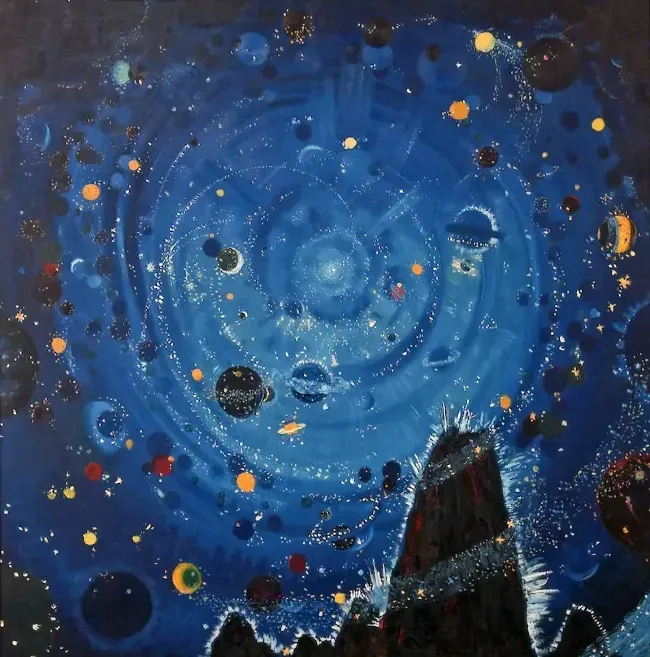
In the painting Starry Sky, Attempt, we find ourselves much closer to the sky—even within it. The planets hang at eye-level to us, the sky circles in front of us, and we discover ourselves in the middle of floating, colorful shapes, and surfaces encrusted with crystals. This world of bright color and surprising forms is a place of light and strangeness.
How does the imagination of the painting affect your perception of the heavens?
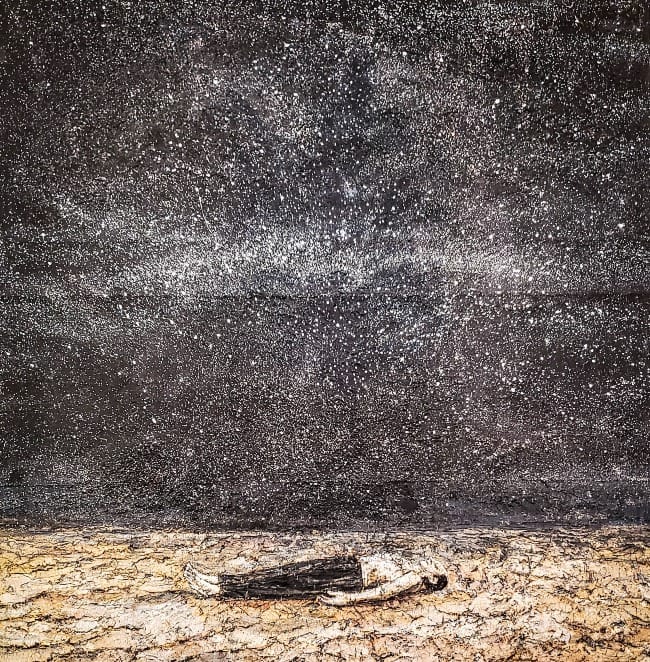
In The Renowned Orders of the Night, a human is brought explicitly into the scene. Lying face up on a dry, scaled earth, the person sleeps (or at least rests) beneath a sky thick and heavy with stars. Although the person's eyes are closed, there is a hint of awareness of the sky he lies beneath, an awareness suggested by the slight smile on his face. There is also a sense that it would be impossible for him to not be aware of this star-soaked sky he lies beneath, considering the amount of light being being thrown out by the stars across him and the surface of the earth.
Does your awe of the natural world ever make you feel empty in a way that actually helps you become more full as a result?
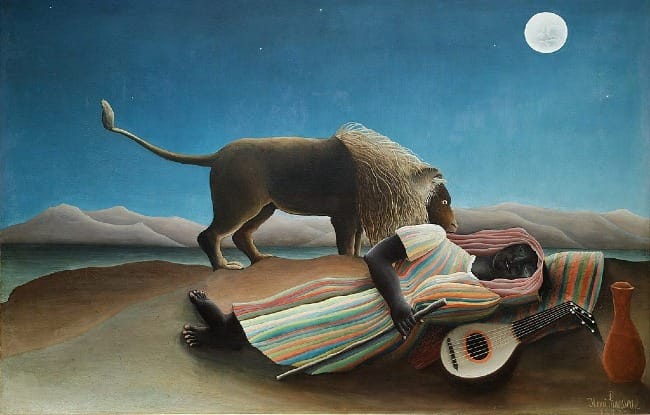
In The Sleeping Gypsy, a different figure lies beneath the stars. She, too, is exposed to the universe, and to the possible dangers within it (such as the lion) and yet, she remains unharmed, asleep, even smiling, unworried enough to sleep in peace despite her vulnerability to whatever possible dangers there might be.
Does the danger or the wonder of the world have the most influence on how you live within it?
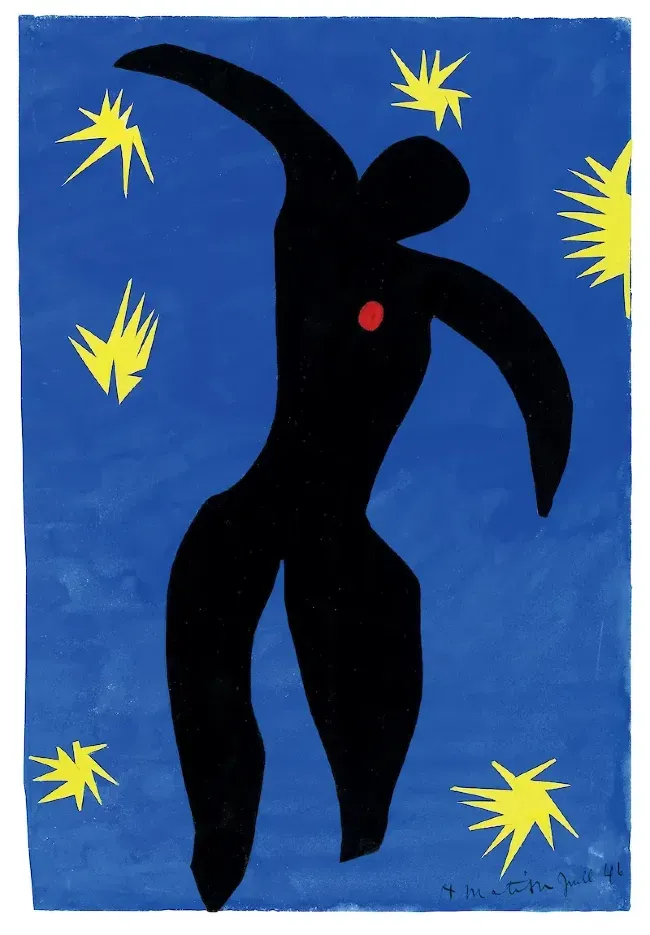
In Icarus, by Henri Matisse, we see perhaps the most interaction yet between the world of sky and the world of people. This work, which was created with a stencil technique called pochoir, features Icarus (who, in Greek mythology, flies too close to the sun using wax wings). In the words of Matisse, he, "with a passionate heart, falls out of the starry sky." Although the tale is a traditionally a tragedy, Matisse's portrait seems to picture him as a dancer among the stars, interacting with them, even as he falls.
Does an awareness of your place in the universe give you joy?
In each of these paintings, the night sky is pictured as an astounding place. They invite us to look up more often, to notice what is, in fact, always above us. It also brings home the truth that even the vast night sky is not immune from human effects. Our own external and internal lights influence that celebrated sky as city lights overshadow the starry skies. Dark sky advocates point out the disorienting and negative effects artificial light can have on migrating animals, insects, and even humans by disrupting circadian rhythms and melatonin production. To learn about these issues and to learn some simple ways (even without turning off all your lights!) that you can help protect the night from light pollution, click on this link: https://www.darksky.org/joining-forces-to-protect-the-night-from-light-pollution/.
And to experience the night sky more fully, make sure that you take time to look up—wherever you are, and whatever season you are in.
Feel free to comment below or contact me directly at info@circlewood.online.
Louise
